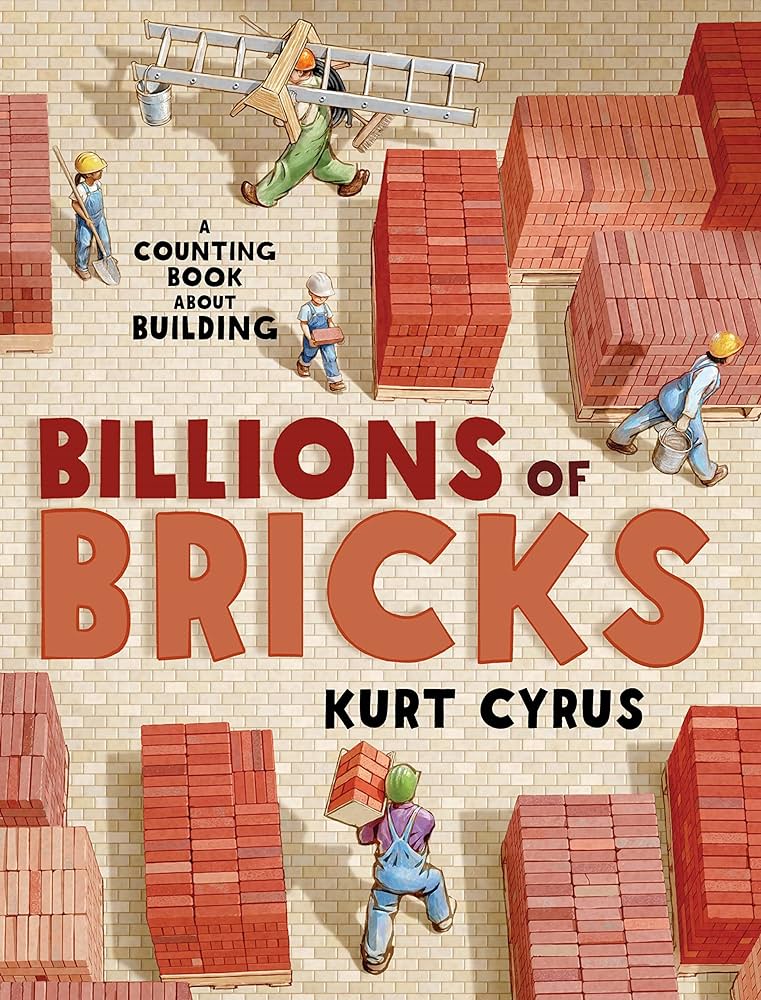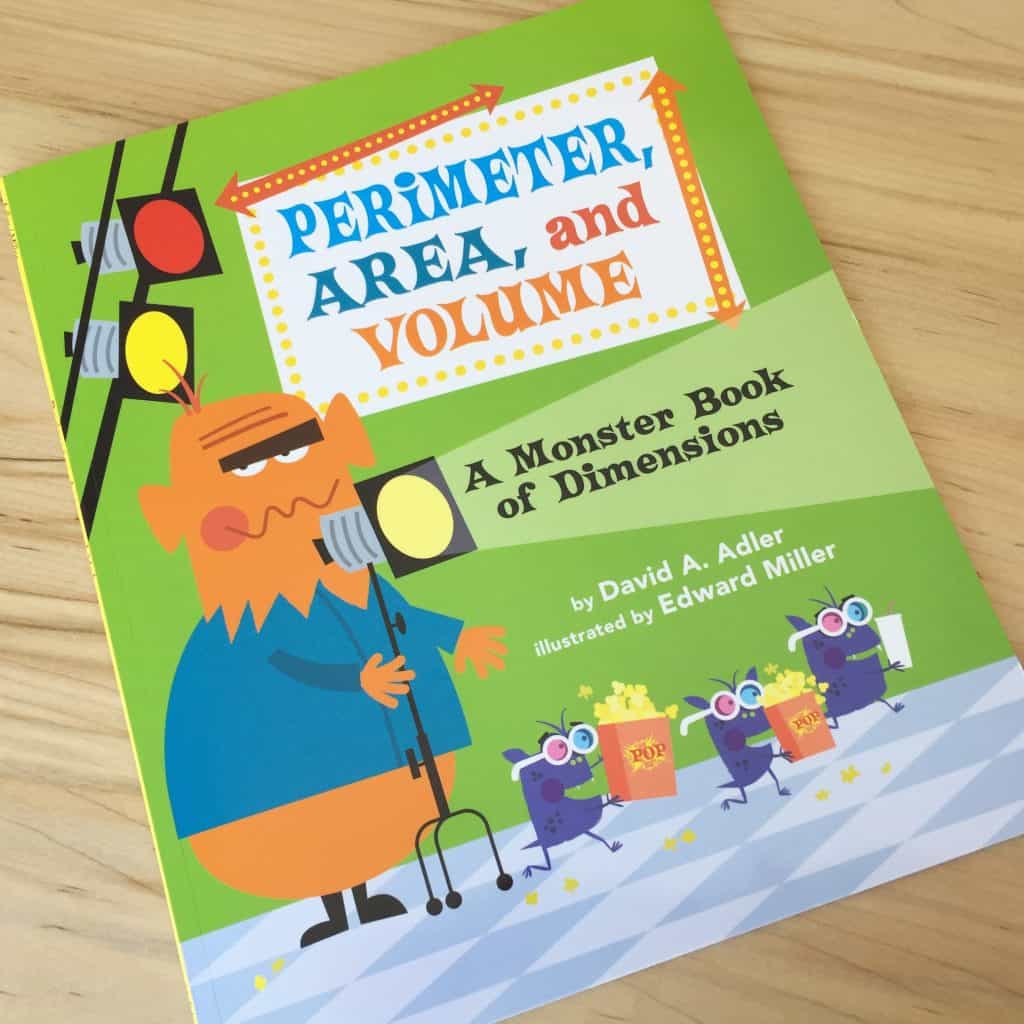 Edutopia publishes a list of their favorite academic studies each year and one of the studies they cited this past year was a survey of other studies on the benefits of using picture books as a part of math instruction. It’s not a meta-analysis because they weren’t crunching numbers; rather, it was a compilation of the results of 16 studies published between 2000-2022. Their study drew some interesting — and perhaps not unexpected — conclusions about this practice. In a nutshell, using picture books did have a positive effect for students in several areas. Equally interesting was what they reported about who was actually using picture books and if they weren’t, why they weren’t.
Edutopia publishes a list of their favorite academic studies each year and one of the studies they cited this past year was a survey of other studies on the benefits of using picture books as a part of math instruction. It’s not a meta-analysis because they weren’t crunching numbers; rather, it was a compilation of the results of 16 studies published between 2000-2022. Their study drew some interesting — and perhaps not unexpected — conclusions about this practice. In a nutshell, using picture books did have a positive effect for students in several areas. Equally interesting was what they reported about who was actually using picture books and if they weren’t, why they weren’t.
The area most schools (and teachers) are likely concerned with is whether using a math picture book makes a difference in math learning, retention and understanding. It does. Multiple studies of children ranging from preschool through middle school (5th- 8th grade) found positive learning effects after a picture book involving a math concept was integrated into a lesson. Academic improvement was noted in counting, number recognition, length measurement, place value comprehension*, and geometry concepts. These improvements were noted at multiple grade levels.
But — and I actually think this might be more important than pure academic improvement — is the effect storybook integration had on student learning attitude. Multiple studies reported the following benefits:
- Reduced anxiety around math
- Increased curiosity about math and interest in the math concept being studied
- Increased engagement
- More positive and open attitude toward the learning
- Less boredom
- Increased willingness to explore the math concepts in the context of the story
- A more organic tendency to think critically about and try to solve the math problem posed by the story.
I think we can all agree that that’s a list that would make any teacher’s heart sing. Yet, not all teachers are availing themselves of this technique.
 The authors reported that preschool and new teachers with less than 5 years experience were the most likely to integrate picture books into their math lessons. The study noted that of all the teachers studied, preschool teachers were the most likely to utilize this practice, likely because they have long experience doing so. Teachers with less than 5 years experience were also more likely to use this practice and also (after PreK teachers) the group that considered this a highly valuable addition to their lessons. Teachers with 6-10 years experience were the least likely to incorporate picture books. We’ll get to why in a minute. Teachers who did use picture books noted that the books provided a natural bridge to real world contexts and provided ideas for hands-on modeling activities and critical thinking questions they could use with their students. In effect, the integration of picture books in math facilitated delivery of more challenging and engaging content.
The authors reported that preschool and new teachers with less than 5 years experience were the most likely to integrate picture books into their math lessons. The study noted that of all the teachers studied, preschool teachers were the most likely to utilize this practice, likely because they have long experience doing so. Teachers with less than 5 years experience were also more likely to use this practice and also (after PreK teachers) the group that considered this a highly valuable addition to their lessons. Teachers with 6-10 years experience were the least likely to incorporate picture books. We’ll get to why in a minute. Teachers who did use picture books noted that the books provided a natural bridge to real world contexts and provided ideas for hands-on modeling activities and critical thinking questions they could use with their students. In effect, the integration of picture books in math facilitated delivery of more challenging and engaging content.
So why aren’t all teachers integrating picture books into math with joy and abandon? This is fascinating to me because for this portion, the authors cited studies of teachers from several different countries: Taiwan, Ireland, and Australia and possibly other countries that weren’t specifically listed in the study. The reasons teachers cited for not using picture books in math boiled down to these:
- Not enough time
- Not sure how to do it
- Lack of access to books**
- It won’t work
- It’s only for little kids***
- It’s impossible to integrate two disparate content areas
 While I am sorely tempted to refute every point on that list, I will confine myself to just two. First, citing time as a reason not to integrate picture books strikes me as a devil’s bargain in which we sacrifice depth and rigor in order to increase speed of delivery. Kids may get all the content but their understanding of concepts will be at a surface level only and the rigor of their work will be at the least demanding levels of thought. This means it’s less likely to be retained long-term and less likely to offer a good foundation for later learning. Second, citing the ‘impossibility’ of integrating two disparate content areas is a failure of imagination. It’s not only possible, it’s highly desirable across a whole range of metrics. It can reduce the total number of objectives a teacher must deliver over the course of the year and it makes explicit connections between abstract concepts and the real world. It also taps into our essential nature as story-telling creatures and by doing so, naturally creates a desire to anticipate, predict, and solve. Helping kids make connections across content areas and between the abstract and the concrete is the beating heart of teaching.
While I am sorely tempted to refute every point on that list, I will confine myself to just two. First, citing time as a reason not to integrate picture books strikes me as a devil’s bargain in which we sacrifice depth and rigor in order to increase speed of delivery. Kids may get all the content but their understanding of concepts will be at a surface level only and the rigor of their work will be at the least demanding levels of thought. This means it’s less likely to be retained long-term and less likely to offer a good foundation for later learning. Second, citing the ‘impossibility’ of integrating two disparate content areas is a failure of imagination. It’s not only possible, it’s highly desirable across a whole range of metrics. It can reduce the total number of objectives a teacher must deliver over the course of the year and it makes explicit connections between abstract concepts and the real world. It also taps into our essential nature as story-telling creatures and by doing so, naturally creates a desire to anticipate, predict, and solve. Helping kids make connections across content areas and between the abstract and the concrete is the beating heart of teaching.
If you want to include picture books in your math curriculum, providing suggestions for how to do so will be a critical aspect of their success. Curriculum guides should offer titles of specific books that teachers can choose from and strategies for integrating each into the classroom via modeling, anticipating/predicting, and/or using the story to frame a new concept or extend a familiar one. We are living in a golden age of children’s books and there is a veritable flood of possible texts for almost any math concept out there. If we don’t know which books to select, it’s because we haven’t looked. There are books for basically every concept in primary math and a lot of the concepts in upper elementary and middle school math, from fractions to probability. Here are three lists (there are dozens more online but they tend to repeat the same books) of math picture books listed either by concept or with descriptions of their content.
We Are Teachers: Picture Books About Math
What We Do All Day: Math Picture Books that are Never Boring
And because I am still irritated by the idea that there are teachers out there who think it’s not possible to combine disparate content areas, I offer the following books, all of which integrate three different (and disparate) content areas:
Lifetime: The Amazing Numbers in Animal Lives (math, ELA, science)
Octopuses have Zero Bones (math, ELA, science)
Are We There Yet, Daddy? (math, ELA, social studies)
How Many Seeds in a Pumpkin? (math, ELA, science)
Math at the Museum (math, ELA, art)
If you or your district would like help designing a curriculum that offers this kind of depth combined with effective instructional support for your teachers in delivering the content, Contact Us! We offer a training in Curriculum Writing that helps you prioritize objectives and build in the components that will help your teachers plan for instruction that meets the needs of all their students.
_______________________________________________________
*This improvement was noted among 5th graders, which I think is significant. Place value instruction begins very early, often in Kindergarten, and 5th grade is often the last year place value is taught explicitly. Theoretically, 5th graders should already have a good grasp of place value, yet the incorporation of a picture book about place value resulted in improved understanding and academic performance.
**This appeared to be mainly a cost concern but the study also mentioned difficulty selecting appropriate books as a factor.
***The authors mentioned this as a perception held by teachers, that older kids would strongly resist using picture books, but the study doesn’t specify whether the teachers thought there would be pushback or whether they had actually experienced pushback from older students. I’ve seen picture books successfully and effectively used with high school students, no pushback noted.
